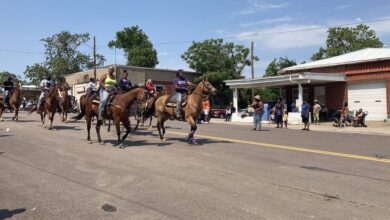Tulsa Race Massacre: What You Didn’t Learn in History Class


Rarely mentioned in textbooks, the 1921 Tulsa Race Massacre was one of the most horrific incidents of racial violence in American history. 2021 marks 100 years since the once-prosperous Greenwood district of Tulsa, Oklahoma, known as “Black Wall Street,” was destroyed in a two-day explosion of violence by a mob of white residents. Hundreds of Black-owned businesses and homes were burned to the ground, killing an estimated 100-300 Black residents, and leaving an estimated 10,000 Black residents homeless.
Here are five facts about the Tulsa Race Massacre that you didn’t learn in history class.
Many Black Oklahomans arrived as slaves through the Trail of Tears.
Starting in 1830 after the passage of the Indian Removal Act, tens of thousands of Native Americans were violently forced to leave their homelands in the Southeastern United States to relocate out West. Commonly known as the Trail of Tears, the Five Civilized Tribes were not the only ones forced across the country. Black slaves were also kept by Native Americans and forced to relocate through the Trail of Tears before settling in Oklahoma.
On July 19, 1866, the Cherokee Nation signed a Reconstruction treaty with the United States that freed all slaves and granted them Cherokee citizenship. The treaty also set aside a large tract of land for them to settle, giving each Freedmen household 160 acres.
The land ownership granted by the 1866 treaty resulted in great economic success for former slaves and their descendants. Oklahoma quickly became the state with the most independently ran Black towns, with Black families traveling to Tulsa’s Greenwood district to spend their money and largely contribute to its financial boom.

The start of the Tulsa Race Massacre can be attributed to yellow journalism.
On May 31, 1921, 19-year-old Black shoe shiner Dick Rowland, an employee at a Greenwood Main Street shine parlor, entered an elevator operated by white 17-year-old Sarah Page in the nearby Drexel Building. A white clerk at a nearby clothing store heard what he thought was a scream and, thinking a young woman had been assaulted, contacted the authorities. The 2001 Oklahoma Commission Report notes that Rowland most likely tripped as he got onto the elevator, and as he tried to catch his fall, he grabbed onto Page’s arm who then screamed.
A brief investigation took place shortly after, and Page told police that Rowland had merely grabbed her arm and that she would not press charges. Later that afternoon, however, the white-owned newspaper Tulsa Tribune published a false account of the story with heavily sensationalized language. The article headlined “Nab Negro for Attacking Girl In an Elevator” stated that Rowland “attacked her, scratching her hands and face and tearing her clothes.” The next morning Rowland was taken into police custody.
Black men from the town quickly gathered at the Tulsa County Courthouse after Rowland’s arrest to protect him from being lynched. Multiple Black men were armed at the scene and violent confrontations with white men and white police officers quickly erupted. Chief of Detectives James Patton attributed the cause of the riots entirely to the newspaper’s account and stated, “If the facts in the story as told by the police had only been printed I do not think there would have been any riot whatsoever.”
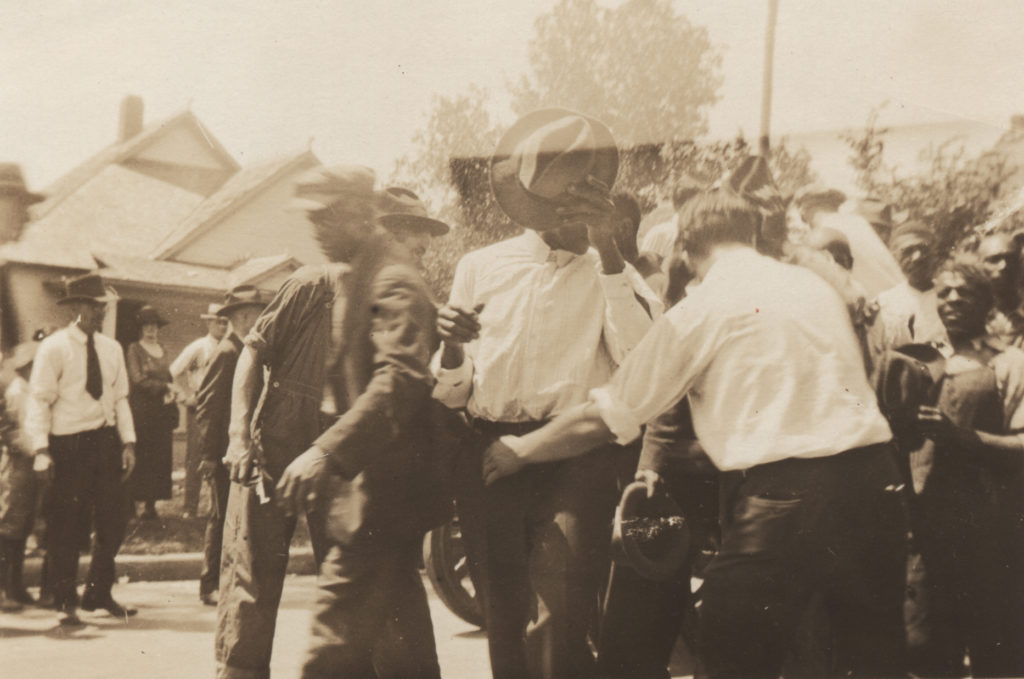
White mob members were armed and deputized by police.
After the outbreak at the courthouse, Black men retreated and hundreds of white people pursued after them, marching through downtown and turning their violence to Greenwood and its residents throughout the night. White mob members began looting and setting fires to local businesses. Events only continued to worsen as carloads of armed whites began shootings in Black residential neighborhoods.
Police were unable or unwilling to stop the violence that quickly spread throughout Greenwood, as the police chief and other civil officials had sworn in over one hundred white men as special deputies. According to the Oklahoma Historical Society, some in the mob were instructed to “get a gun and get a n—–”. The 2001 Oklahoma Commission Report states, “Deputies did not stem the violence but added to it, often through overt acts that were themselves illegal. Public officials provided firearms and ammunition to individuals, again all of them white. Units of the Oklahoma National Guard participated in the mass arrests of all or nearly all of Greenwood’s residents.”
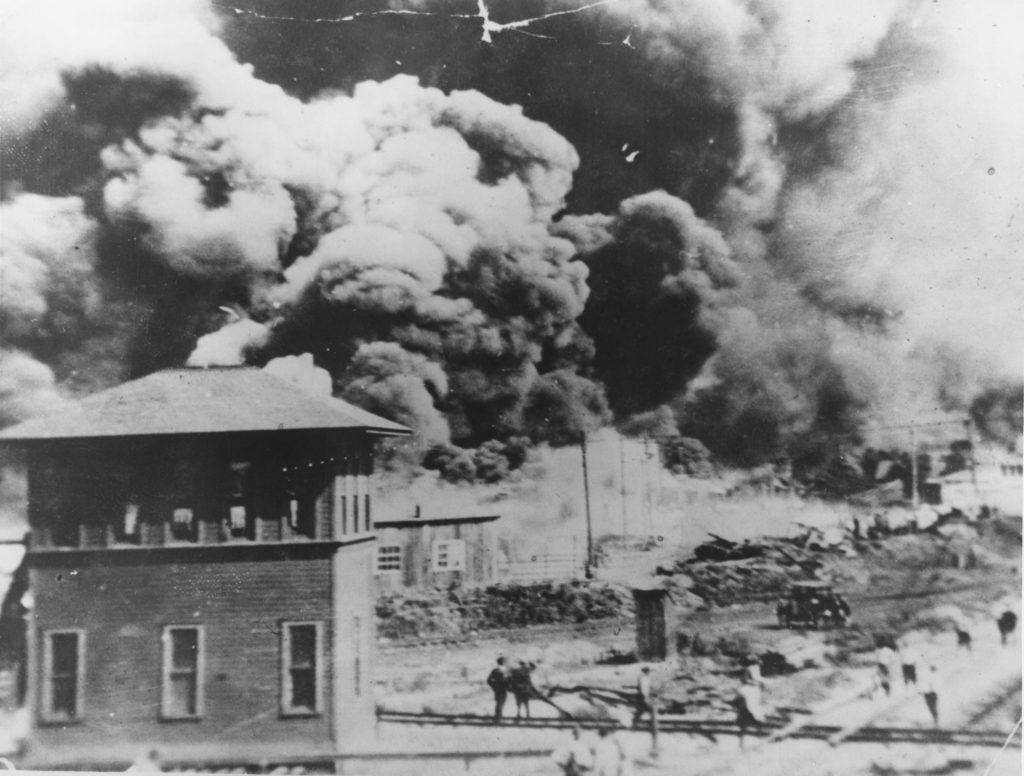
Black community members tried to escape or hide, while white assailants broke into occupied homes, ordering people into the streets and forcing them to detention centers. Attacks by air followed with numerous eyewitnesses detailing airplanes carrying white mob members dropping fire bombs made of turpentine balls on businesses, homes, and even fleeing families. The rampage lasted an estimated 16 hours. By the end of the next day, June 1, 1921, more than 35 square blocks of the once-prosperous Greenwood district had been destroyed.
No perpetrators were charged or tried, instead the Black community was blamed.
Greenwood was burned to the ground and thousands of Black citizens were left injured and homeless, yet the aftermath of the Tulsa Race Massacre was orchestrated to put the blame on the victimized community. In the Tulsa City Commission report issued two weeks after the massacre, Mayor T.D Evens unequivocally stated, “Let this blame for this Negro uprising go right where it belongs, on those armed negroes who started this trouble and who instigated it.”
Shortly after, Governor James B.A. Robertson, who had gone to Tulsa during the riot, requested that a Grand Jury investigate the events in the summer of 1921. The governor, however, appointed a jury of 12 white men, and the all-white jury indicted mostly Black men for the massacre, calling the event a “riot” and attributing it to Black mobs. No one was convicted for the deaths, injuries or property damage that took place.
The 2001 Oklahoma Commission Report states, “Tulsa failed to take action to protect against the riot…Some deputies, probably in conjunction with some uniformed police officers were responsible for some of the burning of Greenwood.” According to human rights investigator Eric Stover, by deputizing members of the white mob, the city and state took on a responsibility to stop the violence and carry out a thorough investigation but failed to do both.
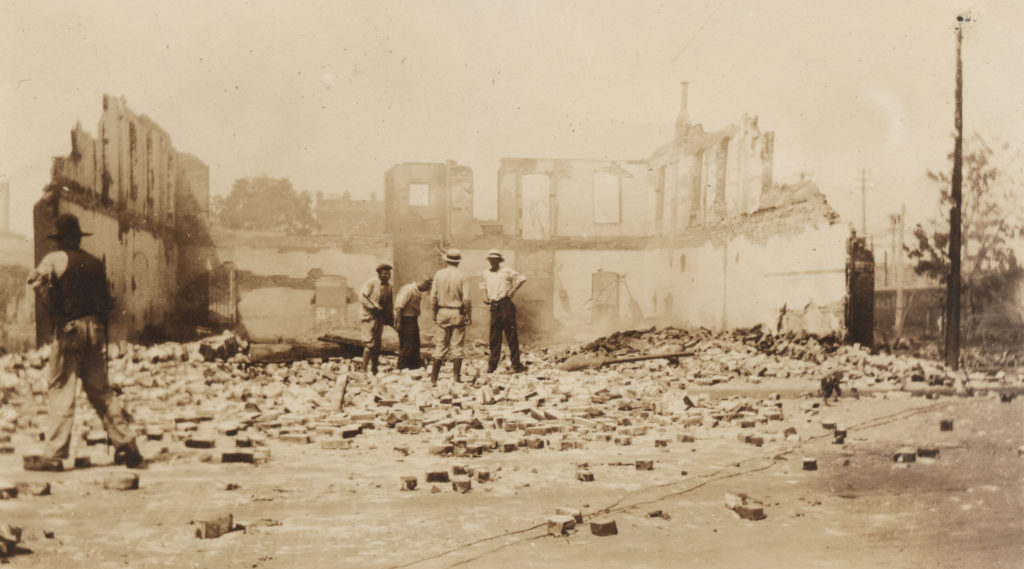
Survivors and descendants of the Massacre are seeking reparations.
An archaeological survey team reported in December 2019 that a section of Tulsa’s Arkansas River might conceal the bodies of Black residents murdered in the Tulsa Race Massacre. Forensic scientists and archaeologists scanned the area with ground penetrating radar and found subterranean areas consistent with mass graves. Searches for other possible mass grave sites are ongoing as descendants of victims seek justice.
In early September 2020, survivors of the 1921 massacre and their descendants filed a new lawsuit in Oklahoma state court against the City of Tulsa and other defendants. This lawsuit seeks to remedy the ongoing nuisance caused by the 1921 massacre and to obtain benefits unjustly received by the Defendants. Attorney Damario Solomon-Simmons details: “We’re focused on making sure there’s not only just financial compensation and accountability, but we would like to see the first-ever criminal investigation into the crimes that were committed against Greenwood and who committed those crimes. We want to know the identities of those individuals who proudly stood in front of cameras, taking pictures with their guns, dead Black bodies behind them, taking pictures burning down homes, because they knew they had the blessing and the protection of the police, of the sheriff, of the National Guard.”
Earlier this month congressman Rep. Hank Johnson introduced the Tulsa-Greenwood Massacre Claims Accountability Act to provide survivors and descendants access to the courts to seek restitution. The only living survivors of the massacre— Viola Fletcher, 107, her brother, Hughes Van Ellis, 100, and Lessie Benningfield Randle, 106 — addressed lawmakers. “I am here asking my country to acknowledge what happened in Tulsa in 1921,” said Viola Fletcher.” I am here seeking justice.”
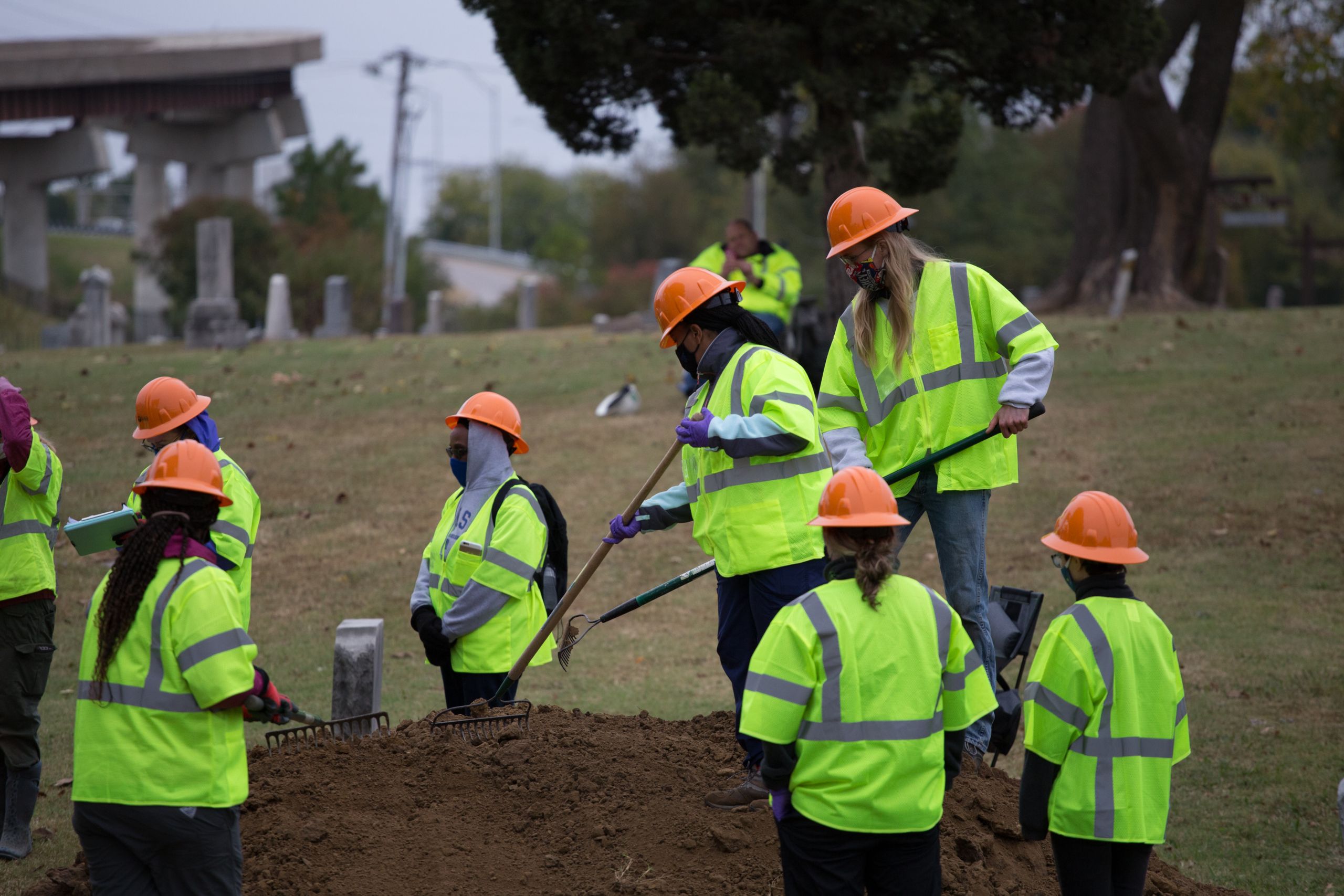
Directed by Emmy-winning director Jonathan Silvers and reported by The Washington Post’s DeNeen L. Brown, the new documentary Tulsa: The Fire and the Forgotten on PBS (check local listings), pbs.org/tulsamassacre and the PBS Video app, examines this deadly assault on humanity on the 100th anniversary of the crime and chronicles present-day public efforts to memorialize the Tulsa Race Massacre and other racial violence around the country.























































